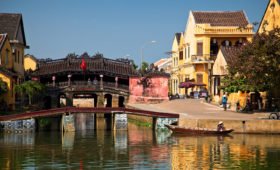The question “is Vietnam a poor or a rich country?” is a complex one depending on who you compare it to…
It is a very developing country. Poverty has dropped from as high as 71% of the population to 6% in the last 30 years. Extreme poverty as can be seen in other Asian countries is not as visible for the most part.
Basic Services
In the last 30 years, basic services have greatly improved.
Access of households to modern infrastructure services has increased dramatically.
As of 2016, 99% of the population has electricity as their main source of lighting, up from 14 % in 1993. Access to clean water in rural areas has also improved, up from 15% in 1993 to 70% in 2016, while that figure for urban areas is above 90%.
Education
Vietnam performs well on general education. Coverage and learning outcomes are high and equitably achieved in primary schools — evidenced by remarkably high scores in the Program for International Student Assessment (PISA) in 2012 and 2015, where the performance of Vietnamese students exceeds that of many OECD countries.
Health Care
Is Vietnam poor or rich country can largely be defined by the quality of its health care. So again it is a mixed bag.
In the major cities, it has good quality hospitals and health services. In rural areas, these are less available while still improving all the time. Life expectancy is now 76. The infant mortality rates have dropped from 54 to 16, per 100,000 live births between 1990 and 2015.
Vietnam is currently working on a universal health care system for all residents. This is based on its regional neighbour Thailand’s system.
Reforms are especially needed in rural areas of Vietnam. Those moving to areas removed from an urban centre will soon notice that sufficient medical care is often not available in small towns and villages. Local hospitals and doctors practices are often not up to modern standards.
Social & Demographic Changes
The population of Vietnam has risen from 60 million to 97 million since 1986.
70% of the population is under 35 with a life expectancy of 76 being the highest in the region compared to other countries with similar incomes.
The population is rapidly ageing and the middle class continues to rise from the current 12% of the population to an expected 25% by 2026.
Conclusion
So as you can see, to ask if Vietnam is a poor or rich country depends on where you are in general. On face value to the casual visitor, you will now see some of the western fast-food giants in the bigger cities which is usually a sign of affluence rather than poverty. But get out into the countryside and many things will look fairly grim in comparison.
GDP is expected to stay around 6.5% in 2020 2021. So in the short and medium-term Vietnam’s economy looks positive. Inflation has been stable for the last 7 years at around 4% also.
Vietnam often seems to mirror its economic-giant neighbour China with all the construction taking place. Although still some way to go to match it.
So to sum up whether Vietnam is a poor or rich country, it is probably best to say it sits perfectly in between for now but will only continue further towards rich if it continues along the same tracks.



